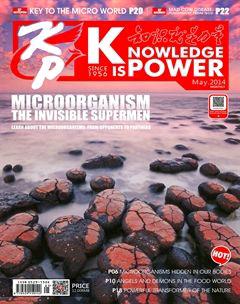Key To The Micro World
Microscope—
magnifying glass of
version 2.0
Early in the 1st century BC, people had already found that small things can be magnified if observed through the spherical transparent objects. Then optical instruments as magnifying glass and glasses came out.
In 1950, the glasses manufacturers from Netherlands and Italy invented microscope based on the principle of magnifying glass. There are simple and compound microscopes. The essence of the simple microscope is a high magnifying glass. Its structure is simple , and it presents real image.
Its time for the
compound microscopes
On one day of 1595, a young boy called H. Janssen from Netherlands overlapped two pieces of convex lens of different size together unconsciously. As he move the glass to the suitable distance, tiny matters are highly magnified right off. He told this strange phenomenon to his father, and they began to work and made the first compound microscope. The microscopes lens cone was about 18 inches long, 2 inches in diameter, both shots were convex lenses, and fixed separately at the two ends of the lens cone. The objective lens was a single convex lens with only one convexity, while the eyepiece was a biconvex lens with two convexities. As the two active lens cones of the microscope were completely collapsed, its magnification times was 3; as the two active lens cones were fully extended, the magnification times was 10. The appearance of compound microscope was a landmark achievement, the biologic photomicroscope we are using today is developed from it.
Stories in the lens cone
The research work of Robert Hooke (1635~1703), the English physicist, made the microscopy popular. In 1665, Hooke designed and made a compound microscope consisted of two pieces of lenses. He observed the slice of oak bark and firstly described the structure of plant cell, and named the comby cells “cellar”. The English word “cell” as named by him, and used till now. in addition, he did the earliest introduction for the microscopic observation, and explained the way to use microscopes in detail.
The microscope made by Hooke was one of the compound microscopes of best performance in the early stage, it used a hemispherical lens as objective lens, and a plano-convex lens as eyepiece. The lens cone was 6 inches long, but it can be lengthened with an additional slide. The lens cone was fixed on a mobilizable ring with screw, and the ring was fixed on a floor stand. The object was fixed on a needle extended from the base, and lit by a light. There was a spherical cavity fixed on the light. Hooke added coarse and micro focusing mechanisms, illuminating system and workbench bearing the specimen in the microscope. These components have been constantly improved and become the basic components of the modern microscope.
The first man who apply microscope to bio-medical field was the Italian Marcello Malpighi (1628~1694). His job in early stage was to research the lung of frog by microscope. In 1660, he found the lung of frog was full of complex vasoganglions, the structure made the air taken away by blood in the lung easily, and the vasoganglions connected the pulmonary artery and the pulmonary vein. Later, he found very slim blood vessels at other parts of the frog body. Although they cannot be seen with naked eyes, they are the blood capillary we are very familiar with today. And they connect the artery and vein in all parts of our body.
The amateur scientist Avon Leeuwenhoek (1632~1723) from Netherlands made great contribution to the development of microscope and the improvement of biology. He hadnt accepted formal science education since young, but had strong interest on new things. Once he heard from his friend that in the glasses store in Amsterdam, the biggest city in Netherlands, the magnifying glass could be polished, with the magnifying glass, you could see things cant be seen with naked eyes. He was very interested in the magical magnifying glass, but too poor to afford for it. Since then, he always went into the store and observed them polishing the lenses carefully. He secretly learned about the skills of polishing the lenses. Hard work pays off, in 1665, Leeuwenhoek finally made a small lens 0.3 centimeters in diameter. He embedded the lens in a frame, and fixed a copper plate under the lens. He also drilled a little hole on the copper plate, in which the light shot and reflected the objective to be observed. In this way, Leeuwenhoeks first microscope was made out successfully. Several years later, he made the microscope which could magnify the object 300 times. For the less of optical knowledge, he couldnt created the compound microscope.
- Knowledge is Power的其它文章
- Hepatitis B Virus (HBV): The Number One Natural Enemy In The History Of Human Infectious Diseases
- Mad Cow Disease: Punishment From God
- Powerful Transformer Of The Nature
- The Artificially Improved Varieties—Genetic Engineering
- Angels And Demons In The Food World
- Microorganisms Hidden In Our Bodies

